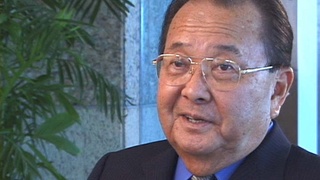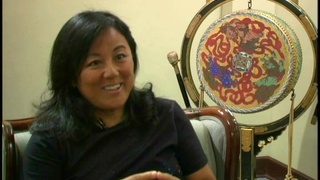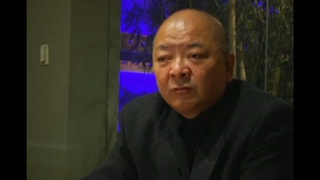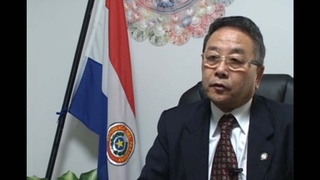Interviews
Difficulty responding to the question "What are you?"
People come in—the pictures are usually pretty easy, people come in, they sit, I shoot five, ten, fifteen photographs, they look at ‘em, they pick one they like, and then I give them this piece of paper where they sit there with this 7-x-7 piece of paper and I’d give them a pen, and I’m like “Okay, I want you to respond to the question, ‘What are you?’” And some people show up at these shoots, they’ve got eight pages hand-written, and I’m like “I can’t take that, it’s gotta fit here, it’s for a book.” And some people sit there and they write, and they crumple it up, and they write, and they crumple it up.
And I had one girl I shot in L.A., in Brentwood, where she sat for three hours with a piece of paper and a pen, and her boyfriend’s sitting with her, he was real polite, and I went over and I said “Just write something, I’ll give you more paper, just start it, get the process going.” And she’s like “No, no, no, no, no, it’s okay.” And then about an hour later I came by again, nothing—the boyfriend finally left. I kept shooting, I finished the shoot, we’re wrapping up, we’re striking the whole—the whole set’s going down, and I finally said “I have to go,” and she just looked at me, and she’s like, “I can’t do this” and she just dropped it and left.
And I realized that it was just—some people have never thought about these things before, and some people have thought about them a lot and it brings back a lot of pain as a kid, or it brings back certain things out of their past, and you know, it’s a powerful thing to actually define who you are.
Date: May 3, 2006
Location: California, US
Interviewer: Jim Bower
Contributed by: Watase Media Arts Center, Japanese American National Museum.
Explore More Videos

Japanese in Minot
(1928 - 2008) Drafted into both the Japanese Imperial Army and the U.S. Army.


Is non-integration due to the distrust because of what happened in the Second World War? (Spanish)
(b. 1962) Peruvian Poet, Okinawan descendant

I’m a Japanese, Peruvian… who am I? (Spanish)
(b. 1962) Peruvian Poet, Okinawan descendant

Being a Nikkei today (Spanish)
(b. 1962) Peruvian Poet, Okinawan descendant

Histories of immigrants (Spanish)
(b. 1962) Peruvian Poet, Okinawan descendant

The myth of the sacrifice of immigrants (Spanish)
(b. 1962) Peruvian Poet, Okinawan descendant

Paisaje terrestre [Terrestrial landscape] (Spanish)
(b. 1962) Peruvian Poet, Okinawan descendant

Fitting back into American life
(1928 - 2008) Drafted into both the Japanese Imperial Army and the U.S. Army.

Interpretation of Nikkei
(1919-2020) Member of the 1800th Engineering Battalion. Promoted Japan-U.S. trade while working for Honda's export division.

Identity (Japanese)
(1928 - 2008) Drafted into both the Japanese Imperial Army and the U.S. Army.

Integrating As First-Generation Japanese-Peruvian (Japanese)
(b. 1962) Japanese restaurant owner and chef in Peru

Peru Representative vs. Japan Representative (Japanese)
(b. 1962) Japanese restaurant owner and chef in Peru

Thoughts on Japan (Japanese)
(b. 1962) Japanese restaurant owner and chef in Peru

